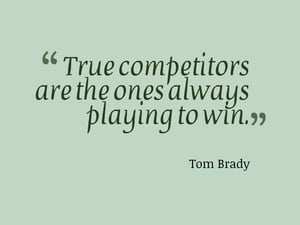 How does your company develop its strategy?
How does your company develop its strategy?
In Playing to Win: How Strategy Really Works, AG Lafley found strategy development incur arguments. The person who argues longest and hardest often wins. In many cases compromise results. Too many cooks in the kitchen, resulted in a diluted strategy at best, and ineffective strategies at worst.
A.G. Lafley discovered a process to get everyone working together to develop strategy with just one Question.
What Would Have to be True?
To develop a good strategy the dialogue you want to foster is called assertive inquiry.
It means clearly articulating your own ideas, sharing the data and reasoning behind them, while genuinely inquiring into the thoughts and reasoning of others.
Translation: At P&G it became simply this “I have a view worth hearing, but I may be missing something.”
This stance dramatically affects group behavior when everyone in the room holds it.
When everyone remains open to the possibility, they may be missing something, two important things happen.
- They advocate their view as a possibility, not as the single right answer.
- They listen carefully and ask questions about alternative views.
Why?
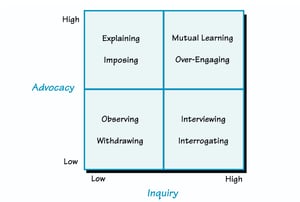 Because, if they might be missing something, the best way to explore that possibility is to understand not what others see, but what they do not.
Because, if they might be missing something, the best way to explore that possibility is to understand not what others see, but what they do not.
Contrast this to managers who come into the room with the objective of convincing others they are right. They will advocate their position in the strongest possible terms, seeking to convince others and to win the argument. They will be less inclined to listen, or they will listen with the intent of finding flaws in other arguments. Such a stance is a recipe for discord and impasse.
You want an open dialogue to increase understanding through a balance of advocacy and inquiry.
This approach includes three key tools:
- Advocating your own position and then inviting responses (“This is how I see the situation, and why; to what extent do you see it differently?”);
- Paraphrasing what you believe to be the other person’s view and inquiring as to the validity of your understanding (“It sounds to me like your argument is this; to what extent does that capture your argument accurately?”);
- Explaining a gap in your understanding of the other person’s views and asking for more information (“It sounds like you think this acquisition is a bad idea. I’m not sure I understand how you got there. Could you tell me more?”).
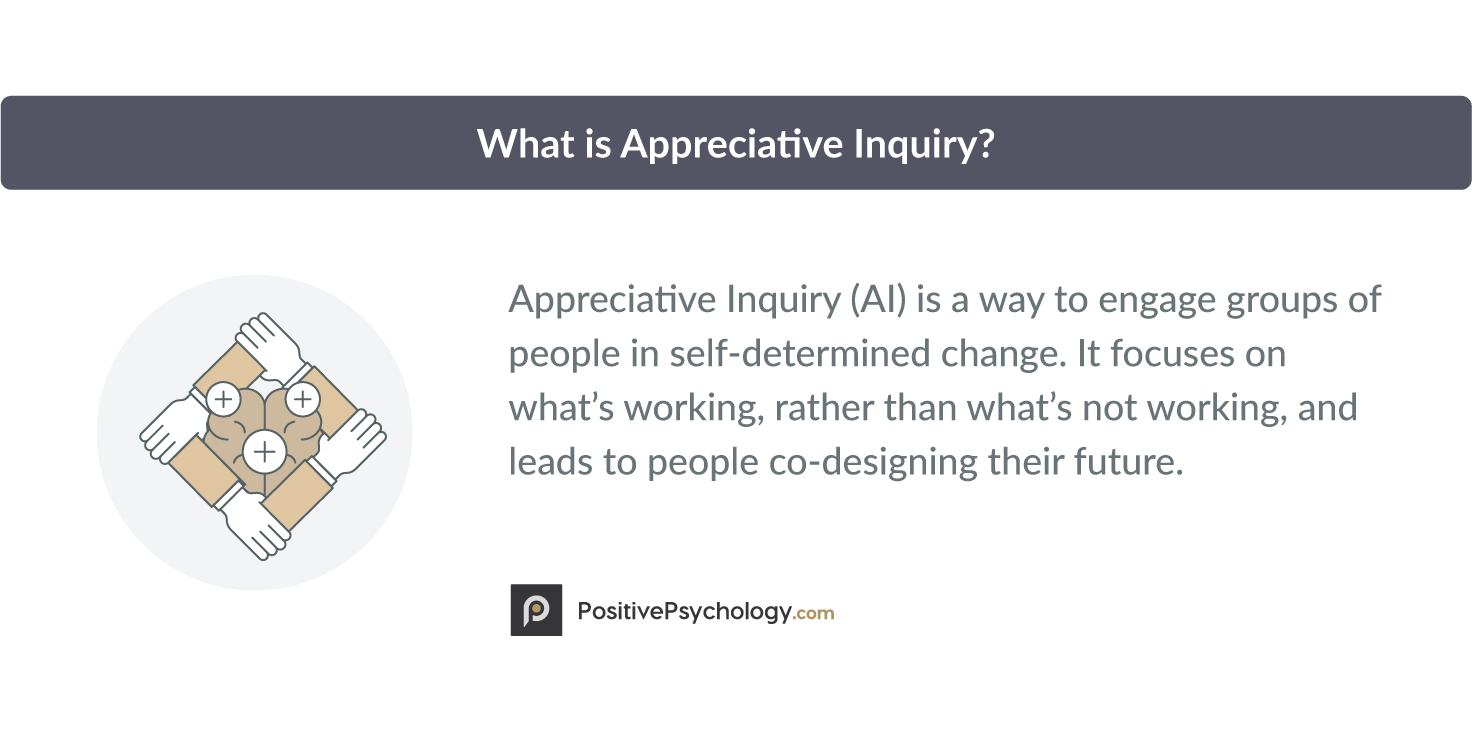 These kinds of phrases, which blend advocacy and inquiry, have a powerful effect on the group dynamic. While it may feel more forceful to advocate, advocacy is a weaker move than balancing advocacy and inquiry.
These kinds of phrases, which blend advocacy and inquiry, have a powerful effect on the group dynamic. While it may feel more forceful to advocate, advocacy is a weaker move than balancing advocacy and inquiry.
Inquiry leads the other person to genuinely reflect and hear your advocacy rather than ignoring it and making their own advocacy in response.
No individual, and certainly not the CEO, should try to craft and deliver a strategy alone. Creating a truly robust strategy takes the capabilities, knowledge, and experience of a diverse team—a close-knit group of talented and driven individuals, each aware of how his or her own effort…
Asking a single question can change everything: what would have to be true?
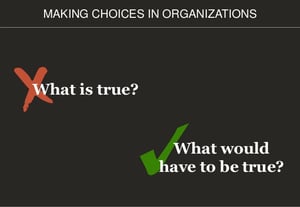 This question, “what would have to be true?” focuses analysis on the things that matter. It creates room for inquiry into ideas, rather than advocacy of positions. It encourages a broader consideration of more options, particularly unpredictable ones. It provides room to explore ideas before the team settles on a final answer. It dramatically reduces tension and conflict, during decision making and afterward. It turns unproductive conflict into healthy tension focused on finding the best strategic approach. And it leads to clear strategic choices at the end.
This question, “what would have to be true?” focuses analysis on the things that matter. It creates room for inquiry into ideas, rather than advocacy of positions. It encourages a broader consideration of more options, particularly unpredictable ones. It provides room to explore ideas before the team settles on a final answer. It dramatically reduces tension and conflict, during decision making and afterward. It turns unproductive conflict into healthy tension focused on finding the best strategic approach. And it leads to clear strategic choices at the end.
We all ultimately want to find the strategy that is best for our business. Rather than asking individuals to find answer for themselves and then fight it out, this approach enables the team to uncover the strongest option together. A standard process is characterized by arguments about what is true.
By turning instead to exploring what would have to be true, teams go from battling one another to working together to explore ideas. Rather than attempting to bury real disagreements, this approach surfaces differences and resolves them, resulting in more-robust strategies and stronger commitment to them.
Growth demands Strategic Discipline.
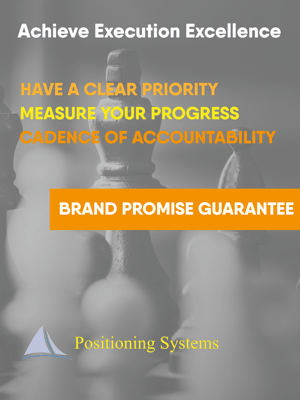 To build an enduring great organization, requires disciplined people, disciplined thought, disciplined action, to produce superior results, and make a distinctive impact in the world.
To build an enduring great organization, requires disciplined people, disciplined thought, disciplined action, to produce superior results, and make a distinctive impact in the world.
Discipline sustains momentum, over a long period of time, laying the foundations for lasting endurance.
A winning habit starts with 3 Strategic Disciplines: Priority, Metrics and Meeting Rhythms. Forecasting, accountability, individual, and team performance improve dramatically.
-2.jpg?width=300&name=3%20Disciplines%20of%20Execution%20(Strategic%20Discipline)-2.jpg) Meeting Rhythms achieve a disciplined focus on performance metrics to drive growth.
Meeting Rhythms achieve a disciplined focus on performance metrics to drive growth.
Let Positioning Systems help your business achieve these outcomes on the Four most Important Decisions your business faces:
|
DECISION |
RESULT/OUTCOME |
|
PEOPLE |
|
|
STRATEGY |
|
|
EXECUTION |
|
|
CASH |
|
Positioning Systems helps mid-sized ($5M - $250M) business Scale-UP. We align your business to focus on Your One Thing! Contact dwick@positioningsystems.com to Scale Up your business! Take our Four Decisions Needs Assessment to discover how your business measures against other Scaled Up companies. We’ll contact you.
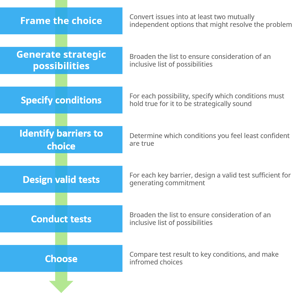 NEXT BLOG – Reverse-Engineering Strategic Options
NEXT BLOG – Reverse-Engineering Strategic Options
The process for exploring what would have to be true has seven specific steps. It begins with framing the fundamental choice, articulating at least two different ways forward for the organization based on your winning aspiration. We explore these seven steps next blog.






.jpeg?width=150&height=135&name=Hand%20with%20marker%20writing%20the%20question%20Whats%20Next_%20(1).jpeg)

